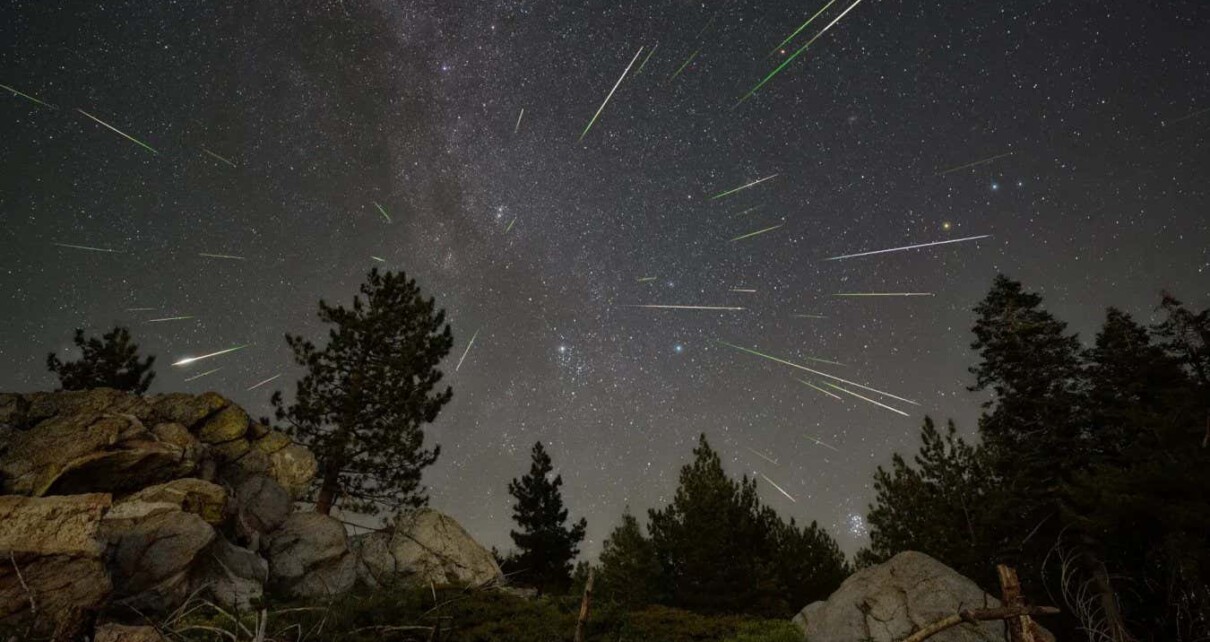[ad_1]

The Perseid meteor shower in 2023 seen from California
NASA/Preston Dyches
Cosmic dust may have delivered elements crucial for life to early Earth. Our planet is relatively poor in several elements that are necessary for the chemistry of life, but the dust that constantly drifts down from space has more, and it could have collected in glacial areas when Earth was young.
“This has been kind of lingering as an idea in the shadows, but people had dismissed it for several reasons, the big one being that there wasn’t enough of it in any one location,” says Craig Walton at the University of Cambridge. Cosmic dust tends to be rich in elements such as phosphorus and sulphur that are relatively unavailable on Earth, and it falls constantly in a thin layer all around the world.
In the past, researchers searching for the origin of such elements on Earth largely focused on larger objects that could deliver more of them at once, but that sort of delivery mechanism could struggle to maintain prebiotic chemistry for long enough for life to arise, says Walton. “Meteorites have long been considered a fantastic source of those elements, but meteorites deliver those elements randomly,” he says. “It’s like if I give you a massive feast once but never again, you’ll be struggling to live a happy life. You need a continuous source, and that’s what cosmic dust is.”
Up to 40,000 tonnes of cosmic dust falls to Earth every year. Billions of years ago that number would have been 10 to 10,000 times higher, but that still would not have been enough to make any individual location particularly rich in the elements important to life. Walton and his colleagues performed simulations of how the dust could have been moved around by wind and water to collect in high enough concentrations to help spark life.
They found that the most promising environments were glaciers, both because they could trap high amounts of dust and because they have very little contamination from terrestrial dirt. When cosmic dust falls on a glacier, it absorbs sunlight and heats up, melting into a small hole in the ice. The hole then continues to trap more and more dust. Finally, the chamber of dust drains into ponds at the edge of the glacier.
We can still see this process happening today, but if Earth was cold enough to have glaciers billions of years ago, the increased amount of dust would have made it even more efficient. “If you want to produce a sediment that’s really rich and has lots of these reactions that could lead to life, this is the best way forward,” says Walton.
“It’s unclear whether glaciers were common on early Earth – we just don’t have great data for this time period in general,” says Ben Pearce at Johns Hopkins University in Maryland. “However, I think any possibility is worth studying, especially if it provides a mechanism for creating a rich primordial soup.”
The lack of data about the conditions on Earth during this time period make it difficult to say how important cosmic dust could have been for the origins of life. “We’ve always had trouble figuring out what the bulk chemistry of the early Earth would have been like,” says Matthew Pasek at the University of South Florida. “But this could be an important source of very valuable material.”
Topics:
[ad_2]
Source link




